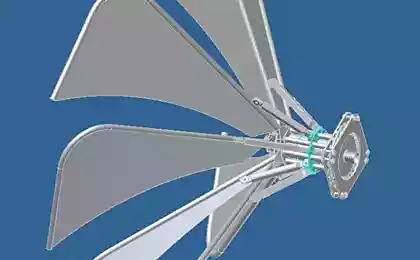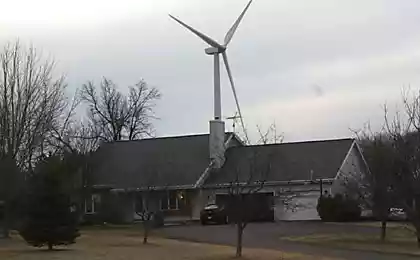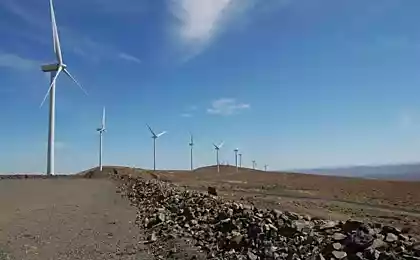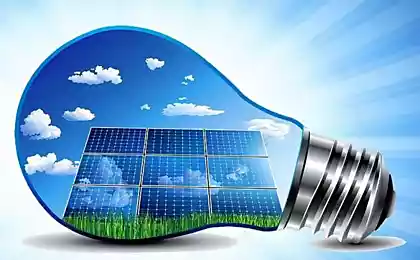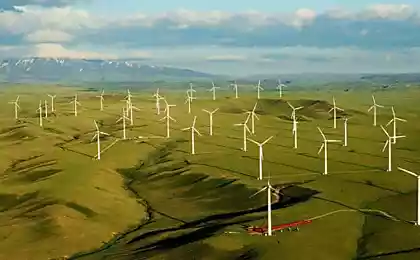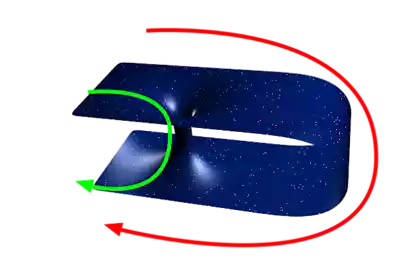583
Most large wind turbines
Who said that the wind turbines are not able to compete in power with nuclear power plants? Look at the world's largest wind power installation of Siemens SWT-7.0-154. With an area of 18 600 m2 metania this giant alone generates maximum power of 7 MW at a wind speed of 13-15 m/s Several hundred of these wind turbines — nuclear power.

SWT-7.0-154 — this is the flagship model of the company Siemens. Name the encrypted generated power (7 MW) and the diameter of the rotor blades (154 m). It replaced the previous flagship of the SWT-6.0-154, which is virtually identical technical specs, but equipped with more powerful magnets. The stronger magnetic field allows you to generate more power for the same diameter. In other words, in this VAN option in output power from a square meter of Oltenia above is about 16.7%.
The wind turbine starts to work at a minimum wind speed of 3-5 m/s, and the generated power steadily increases to a maximum of 7 MW at a wind speed of 13-15 m/s. When reaching a wind speed of 25 m/s, the generation stops.
It would seem that at such wind speeds the blades of the wind turbine needs to spin fast, but this is absolutely not true. In fact they rotate slowly and gradually, making just 5-11 rpm. That is, a full rotation of the three blades make for about 5-12 seconds, depending on wind speed.
A stronger magnetic field in the new model also means that the turbine is harder to spin. To achieve the same speed 5-11 rpm and the maximum generated power (7 MW instead of 6 MW) this turbine required increased wind speed: 13-15 m/s instead of 12-14 m/s, Respectively, and the initial rate of wind energy has a higher. That's why this model is a giant optimally suited for placement in areas with relatively strong winds, in the sea.
Inside the turbine there is no reducer (gear box) — it employs direct-drive system that is connected to a synchronous alternator with permanent magnets. Because the speed of the generator determines the voltage and frequency of the current, "dirty AC" is converted to DC and then converted back to alternating current before it enters the network.

In recent years, in the field of wind energy is very rapid technological progress. Literally every year there are new models of wind turbines more power and efficiency. Large and small, designed for whole villages or individual houses on large wind speed in the sea or on the average wind speed over the roof of a private house.
For example, the world record for the maximum generated power did not belong to Siemens, and the other one German turbine manufacturer Enercon E126, which gives to 7.58 MW. The video shows the process of installing a turbine.
Rack height Enercon E126 — 135 m, rotor diameter — 126 m, total height including blades is 198 m. the Total weight of the base of the turbine is 2500 tons, and the wind — 2800 tons. Only the generator weighs 220 tons, and a rotor with blades — 364 tons. The total weight of the whole structure with all the details — 6000 tons. The first installation of this type was installed near the German Emden in 2007, although in the modification, the maximum power was lower.
However, wind turbines-giant — pretty expensive. One such wind turbine of 7 MW will cost $14 million together with the installation if you order all work certified German specialists. Of course, if you develop production in the country, the benefit of metal is missing, then cost is possible to reduce several times. Who knows, maybe such a huge national project construction would take the population of the country and helped to get out of the economic crisis.
Why windmills won't replace Hasadna of the most recent construction in Eastern Europe nuclear power plants — the Belarusian nuclear power plant will receive two power units with WWER-1200 reactors with capacity of 1,200 MW. It would seem that several hundred wind turbines Siemens compares to a nuclear power station. The construction cost about the same, but the "fuel" is free. Interestingly, the Belarusian nuclear power plant just built in the area, where climatic data for the years 1962-2000 is almost the highest average annual wind speed in Belarus. But in reality, this "greatest" average annual wind speed is only about 4 m/s (at 10 m), which is barely enough to run wind turbines at minimum power.
Before installation should check for the annual map of winds in the area of deployment data, the average power density of wind flow at height 100 m and above. It would be good to make such maps for the entire country to find the most optimal construction of wind turbines. You need to keep in mind that wind speed strongly depends on the height that is well known to residents of high-rise buildings. In regular weather forecasts on TV misleading wind speed at a height of 10 m above the ground, and the wind turbine to measure the speed at an altitude of 100-150 m, where the winds are much stronger.
So optimally such giants in the sea, a few kilometers from the coast at high altitude. For example, if you install such facilities along the Northern coast of Russia in increments of 200 meters, the maximum power of the array will be 690,3 GW (the coast of the Arctic ocean is 19724,1 km). The wind speed there has to be reasonable, only with the pouring of foundations will have to deal with permafrost.
However, on the stability of wind turbines will never compare to nuclear or hydropower plants. Here the power companies have to constantly monitor the weather forecast because the generated power is directly dependent on wind speed. The wind should be not too strong and not too weak. Well, if the average wind turbines will generate at least a third of maximum power. published
Source: geektimes.ru/post/284188/

SWT-7.0-154 — this is the flagship model of the company Siemens. Name the encrypted generated power (7 MW) and the diameter of the rotor blades (154 m). It replaced the previous flagship of the SWT-6.0-154, which is virtually identical technical specs, but equipped with more powerful magnets. The stronger magnetic field allows you to generate more power for the same diameter. In other words, in this VAN option in output power from a square meter of Oltenia above is about 16.7%.
The wind turbine starts to work at a minimum wind speed of 3-5 m/s, and the generated power steadily increases to a maximum of 7 MW at a wind speed of 13-15 m/s. When reaching a wind speed of 25 m/s, the generation stops.
It would seem that at such wind speeds the blades of the wind turbine needs to spin fast, but this is absolutely not true. In fact they rotate slowly and gradually, making just 5-11 rpm. That is, a full rotation of the three blades make for about 5-12 seconds, depending on wind speed.
A stronger magnetic field in the new model also means that the turbine is harder to spin. To achieve the same speed 5-11 rpm and the maximum generated power (7 MW instead of 6 MW) this turbine required increased wind speed: 13-15 m/s instead of 12-14 m/s, Respectively, and the initial rate of wind energy has a higher. That's why this model is a giant optimally suited for placement in areas with relatively strong winds, in the sea.
Inside the turbine there is no reducer (gear box) — it employs direct-drive system that is connected to a synchronous alternator with permanent magnets. Because the speed of the generator determines the voltage and frequency of the current, "dirty AC" is converted to DC and then converted back to alternating current before it enters the network.

In recent years, in the field of wind energy is very rapid technological progress. Literally every year there are new models of wind turbines more power and efficiency. Large and small, designed for whole villages or individual houses on large wind speed in the sea or on the average wind speed over the roof of a private house.
For example, the world record for the maximum generated power did not belong to Siemens, and the other one German turbine manufacturer Enercon E126, which gives to 7.58 MW. The video shows the process of installing a turbine.
Rack height Enercon E126 — 135 m, rotor diameter — 126 m, total height including blades is 198 m. the Total weight of the base of the turbine is 2500 tons, and the wind — 2800 tons. Only the generator weighs 220 tons, and a rotor with blades — 364 tons. The total weight of the whole structure with all the details — 6000 tons. The first installation of this type was installed near the German Emden in 2007, although in the modification, the maximum power was lower.
However, wind turbines-giant — pretty expensive. One such wind turbine of 7 MW will cost $14 million together with the installation if you order all work certified German specialists. Of course, if you develop production in the country, the benefit of metal is missing, then cost is possible to reduce several times. Who knows, maybe such a huge national project construction would take the population of the country and helped to get out of the economic crisis.
Why windmills won't replace Hasadna of the most recent construction in Eastern Europe nuclear power plants — the Belarusian nuclear power plant will receive two power units with WWER-1200 reactors with capacity of 1,200 MW. It would seem that several hundred wind turbines Siemens compares to a nuclear power station. The construction cost about the same, but the "fuel" is free. Interestingly, the Belarusian nuclear power plant just built in the area, where climatic data for the years 1962-2000 is almost the highest average annual wind speed in Belarus. But in reality, this "greatest" average annual wind speed is only about 4 m/s (at 10 m), which is barely enough to run wind turbines at minimum power.
Before installation should check for the annual map of winds in the area of deployment data, the average power density of wind flow at height 100 m and above. It would be good to make such maps for the entire country to find the most optimal construction of wind turbines. You need to keep in mind that wind speed strongly depends on the height that is well known to residents of high-rise buildings. In regular weather forecasts on TV misleading wind speed at a height of 10 m above the ground, and the wind turbine to measure the speed at an altitude of 100-150 m, where the winds are much stronger.
So optimally such giants in the sea, a few kilometers from the coast at high altitude. For example, if you install such facilities along the Northern coast of Russia in increments of 200 meters, the maximum power of the array will be 690,3 GW (the coast of the Arctic ocean is 19724,1 km). The wind speed there has to be reasonable, only with the pouring of foundations will have to deal with permafrost.
However, on the stability of wind turbines will never compare to nuclear or hydropower plants. Here the power companies have to constantly monitor the weather forecast because the generated power is directly dependent on wind speed. The wind should be not too strong and not too weak. Well, if the average wind turbines will generate at least a third of maximum power. published
Source: geektimes.ru/post/284188/
How Germany changed my attitude to time
Spiral neck twist: exercises to improve blood flow and innervation
